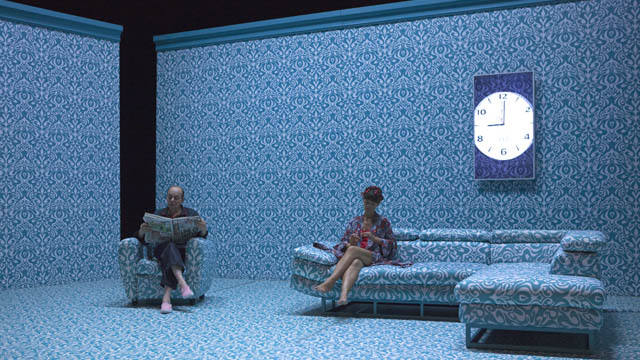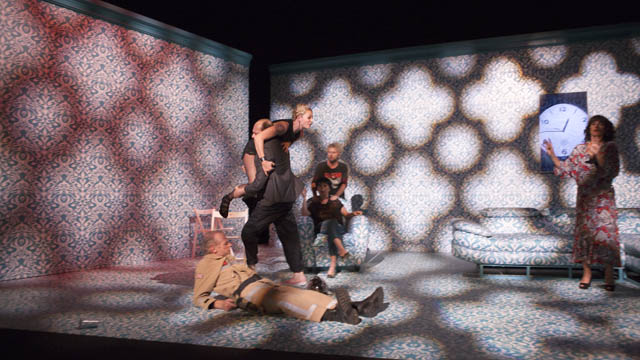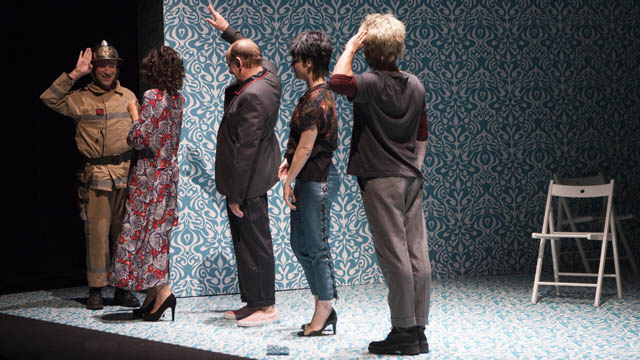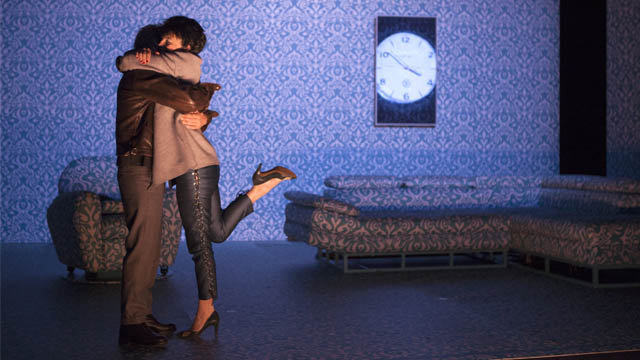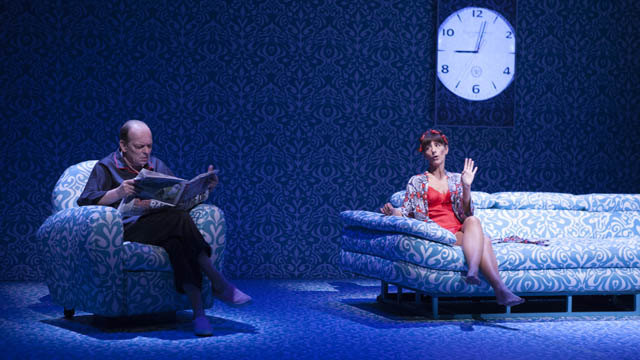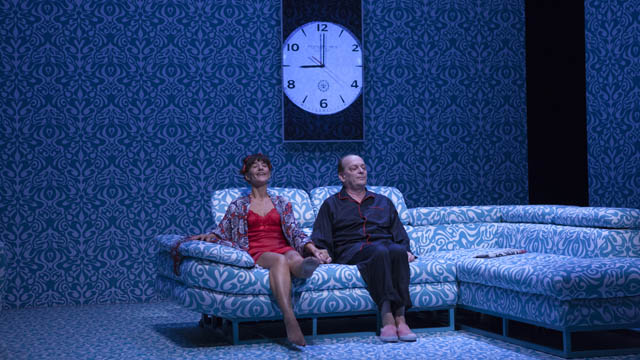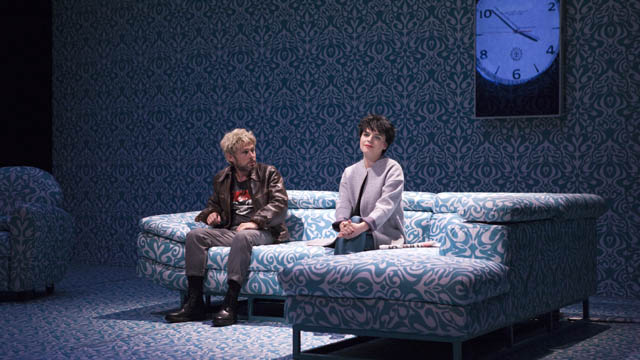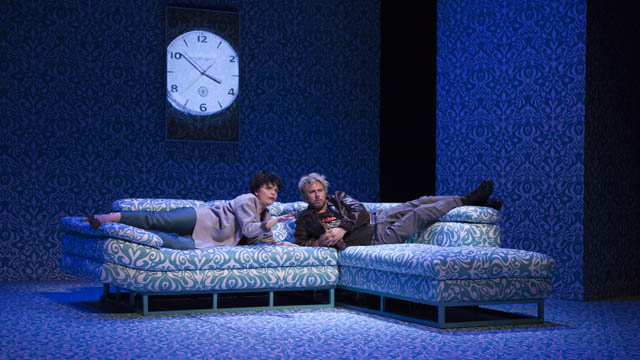« One of the raisons why “The Bald Soprano” has been given that title, is precisely because there is in it definitely no soprano at all, bald or hairy. »
Eugène Ionesco, Eugene Ionesco, “Notes and counter-notes”
The first funny thing, in this work, is its subtitle, “anti-play”: So, according to the playwright you are about to see a play that is not a play, more, a play that rebels against any play so far written… The fact is, as proved by so many attempts found on Internet, The Bald Soprano is not possibly summed up.
M. Mrs Smith entertain the Martins at their place… Everything is British in the story, people, pipe, armchair, newspaper, including the seventeenth stroke of the clock. Even the silence is British, as tells the author. But Ionesco who had the idea of the play when learning English in the famous self teaching manual, writes in his memoirs: “If I had tried, and failed, to learn Italian, Russian or Turkish, we could have said that the play resulting from this fruitless effort was satirizing the Italian, Russian or Turkish society”.
So, the Smiths entertain the Martins at home… They keep on the futile side of the conversation, without any real personal exchange. First we think it’s a light comedy, or a serious play focusing on the private world of relationships, then it veers onto slippery ground. It’s this situation, ordinary and universal at the same time, that Ionesco chooses in order to write one of the funniest plays of the century. Yet the Smiths and the Martins, our good middle class heroes, live a deeply uneasy moment. Here, it’s not the comical material that is funny but it’s this acutely anxious inspiration of the playwright, without effect, without trick, without joke and so close to us, that is so amusing. It’s the criticism of all theatrical conventions, naturalistic dialogues and petty moral codes… More than satirizing the conformism, Ionesco makes here the “comedy of the comedy”, according to his own expression. And it’s delightful! He doesn’t condemn us, he shares with us the absurdity of our positions, he makes us laugh about ourselves, and it’s not appalling, for, thanks to him, we understand ourselves better and have a sudden urge to do something.
Ionesco’s theatre hasn’t aged a bit. Often the label “absurd” made us put his work away on the shelf of extravagance: So if all is absurd, then everything is possible, we can say everything, but all meaning is lost. But Ionesco’s theatre is just the reverse, he says, and doesn’t say, at the same time, he makes understand the same way as does a Magritte’s painting, obviousness of what is depicted is striking.
To the word “absurd”, Ionesco used to prefer “amazement”. For what is absurd, it’s not his theatre, it’s the word discovered in the mirror he holds to us: our world. And this reflexion never dates. Much better, it’s reincarnated according to the metamorphoses of our societies, and under our amazed gaze the Smiths and the Martins go on with uttering their platitudes, with standing on their drifting raft, by heavy swell…
This iconic play is an essential component of my career as a director. Continually I kept thinking of it, referring to it in my practical theatre work. First, it’s a questioning about the raison d’être of the performance itself, then, it opens new narrative prospects, and at last, it abolishes the traditional line between tragedy and comedy. Since the time I have discovered it, when I started, I can’t bear anything in theatre deprived of humour or a certain connivance with the spectator.
In order to stage such a text as “The Bald Soprano”, I have brought together very concerned actors, able to work in a real spirit of company. It’s a new register and style for Romane Bohringer, with whom we are about to collaborate for the 8th time since 2002.
The part of the music will be also quite important in my approaching the play, that’s why it will be composed specially for the project.
Pierre Pradinas, 28th of February 2016

